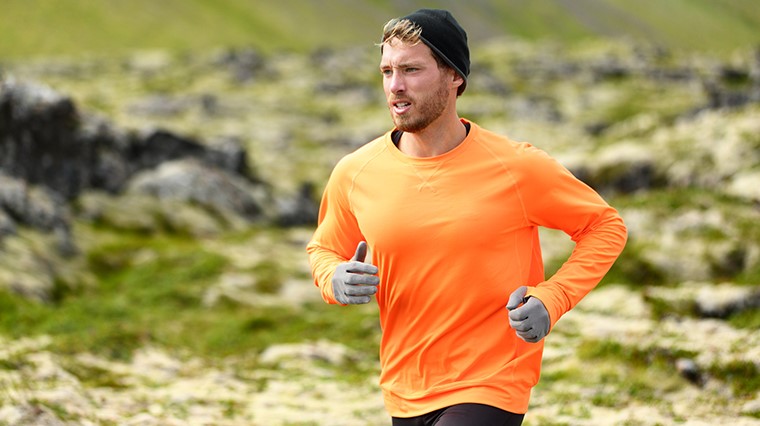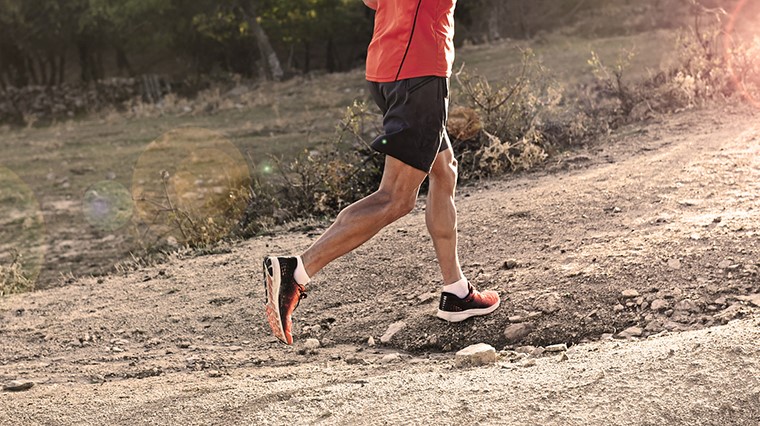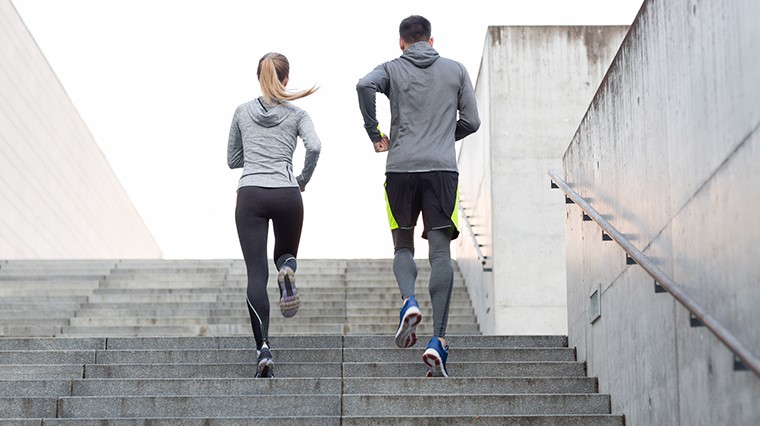Have A Love-Hate Relationship With Uphill Running?

Running uphill is a pain, but that’s why we love it. The hot ache in our legs after a hill climb reminds us that with regular training and a little tough love, we can run better.
By putting these pro tips into action, you can make your uphill running battle less daunting, build up speed and endurance, strengthen your heart and earn powerful calves, quads and hamstrings.
Warm-up
Pre-run dynamic (active) stretches and a 10 - 15 minute session of gentle jogging is ideal to prep your muscles for the uphill climb.
Gradually increasing the intensity of your workout allows your muscles to loosen up and lubricates your joints, so you can safely transition to more strenuous activity.
Don’t forget to cooldown and recover post-run and put our injury prevention techniques into practice.
Skip the running start
As keen as you are to build momentum, powering up the hill with full force (a running start) is a common beginner’s mistake, leaving you quickly breathless and feeling flat like a pancake.
Many competitive runners hold back until the last third of the hill before unleashing an extra kick of energy to accelerate over the peak, and apply that forward momentum into their downhill performance.
Lean naturally, not forcefully
Although your instinct is to lean into the hill, you should stick to the upright, proper running form you use on flat running surfaces – keeping head, shoulders, hips and ankles in alignment.
The forward lean will occur naturally from your ankles (not waist) and be slight (not dramatic). Aim to run perpendicular to the slope of terrain and avoid overextending from the torso as this will cause tension in your shoulders and hips as well as stress to your lower back.
A proper running posture will activate your hip flexor muscles fully and encourage your glutes to do their share of the heavy lifting, so your legs can churn away with less effort.
Breathe better with proper running form

Maintain a straight body alignment with your chest out and eyes forward to breathe efficiently and ‘open’ your lungs. Looking at your feet can break your proper running form, causing you to hunch and restrict your airway and lung capacity.
Being aware of proper breathing technique will help prevent huffing and puffing. The goal is to maintain a consistent breathing rate to use your energy efficiently and postpone fatigue.
Drive forward with your arms
Don’t underestimate your arms. Your arms and legs naturally move in sync, so a powerful back-forward arm swing will help pump your legs and promote a faster turnover to propel you uphill.
Keep your arms close to your body with elbows at a 90-degree angle, facing backwards rather than out to the sides to streamline your movement.
Lift your knees
Lifting your knees on inclines in a smooth upward and forward motion will help you maintain proper running form and in particular, allow your hip muscles to put more power into your stride.
Your motion will be naturally guided by the gradient of the hill - the sharper the incline, the higher the knee lift required to accommodate the upward movement.
Use short, quick strides

Don’t force your body to maintain the stride length used during flat running. Short strides uphill allow you to sustain your energy on the climb as opposed to a choppy, overextended stride that forces you to ‘pull’ your body forward.
Ideally, your feet should contact the ground directly beneath your body. Short strides will increase your stride frequency and help keep you light and quick on your feet.
Maintain a controlled, consistent effort
Since you’re fighting gravity, your speed running uphill will be naturally slower than on flat surfaces and dictated by the severity of the incline.
Rather than focusing on maintaining the same speed as flat running, focus on maintaining the same effort, even as the gradient of the hill changes. Your breathing rate can act as a guide – if it’s rapid and shallow, take the pace down a notch.
Use downhill for recovery
Woo! You’ve made it to the crest, you’re sweating like an ice cream cone on a summer’s day and your legs feel like lead.
Although downhill running increases impact stresses (particularly on your quad muscles), with gravity now working in your favour you can practice active recovery while there’s less energy demand on your heart and muscles.
As long as you’re not training for race day speeds, a light jog or walk down the hill is ideal to regain your breath and conserve energy.
Increase the incline gradually
Baby steps! With any workout, you need to give your body the opportunity to adapt to prevent injury and acclimatise to new stresses on your muscles, particularly when they’re activated in an uncommon way.
Choose gentle inclines first off and gradually overcome steeper gradients overtime. This slow and steady progression may also alleviate mental barriers to your performance – breaking up your running goals into doable steps and keeping your inner procrastination monkey under wraps.
Practice on stairs

Running stairs one step at a time can help you practice uphill running technique as the limited surface on each step forces your body to maintain a shorter stride and encourages a light, quick pace.
Stair climbs mirror the conditions your body will endure when uphill running in terms of your breathing and heart rate. Alike with other aerobic exercise, it’ll train your body to use oxygen more efficiently and allow you to practice breath control.
Mix it up
Once you've built up confidence, switch up your routine by choosing hills of varied inclines and distances to challenge your muscles and keep your mind stimulated.
Occasionally trade your running shoes for trail running shoes if you’re not afraid to get dirty or adjust the incline on your treadmill to get the basic benefits of uphill running in your own home or local gym.
